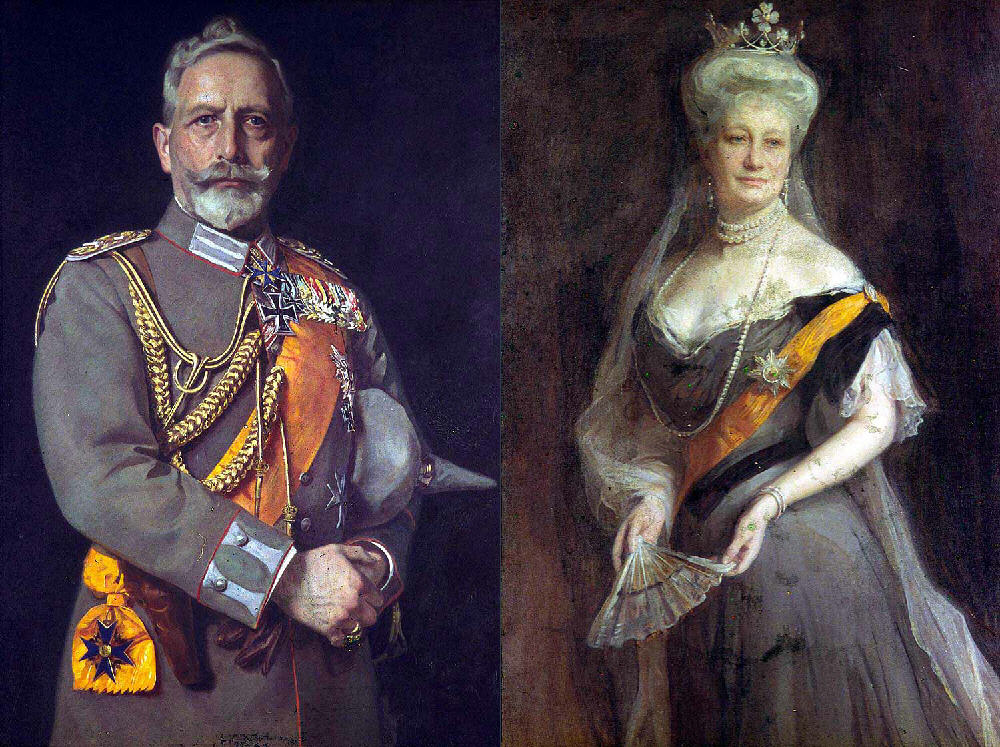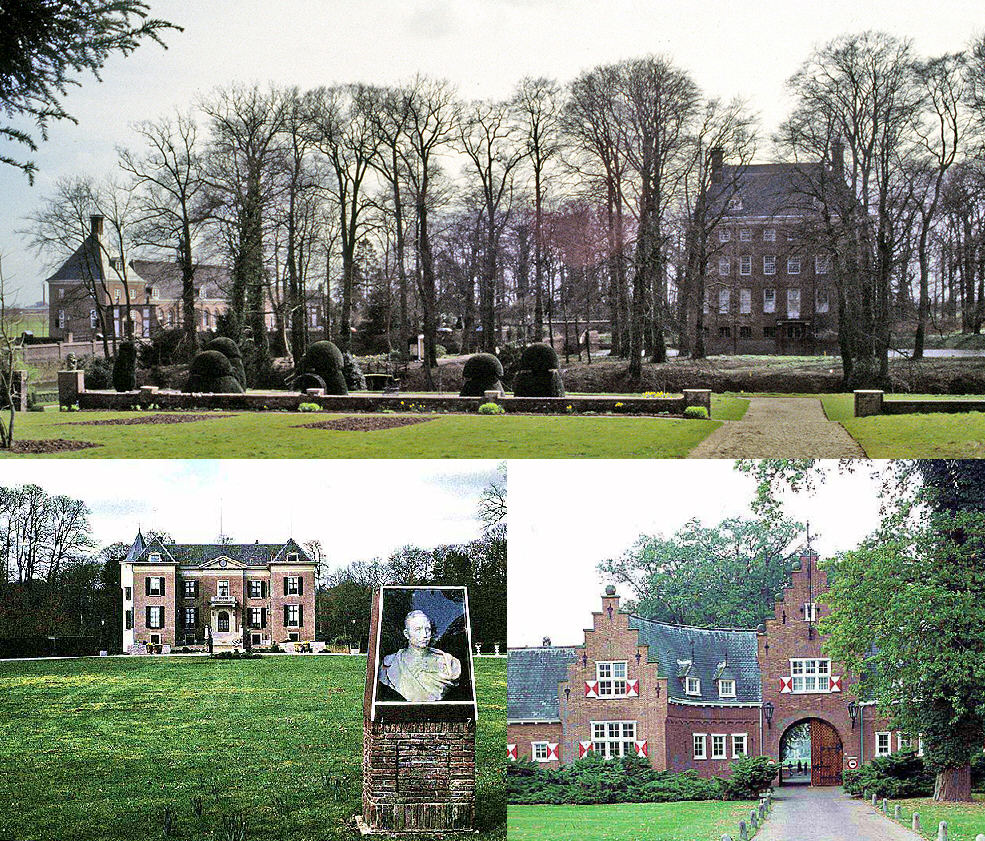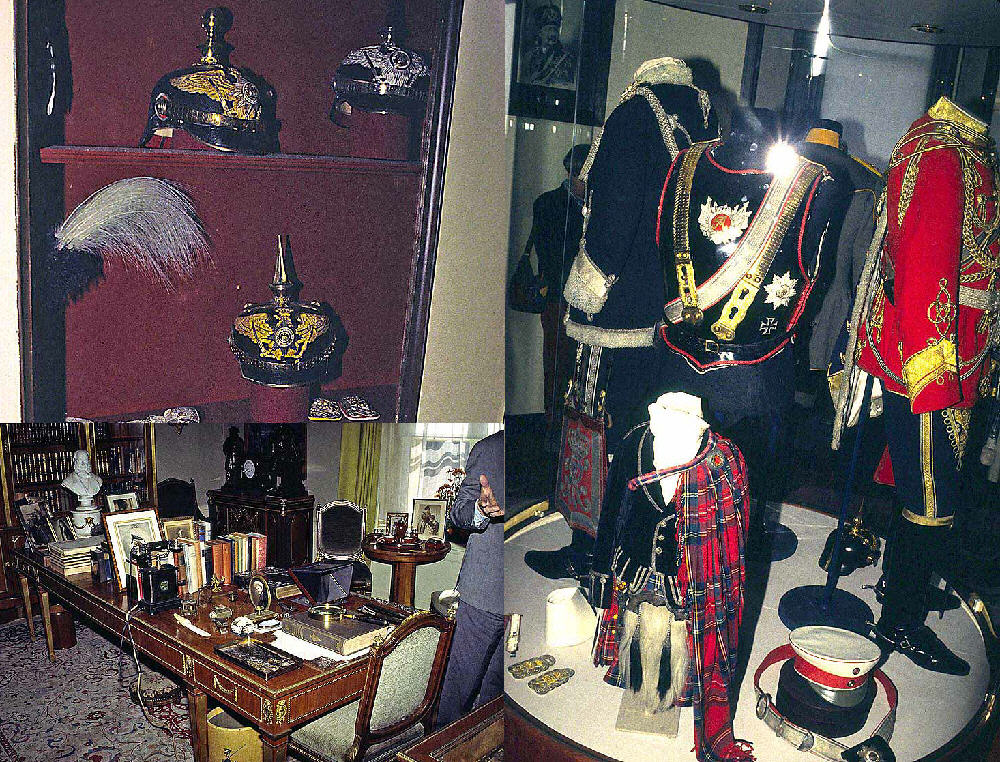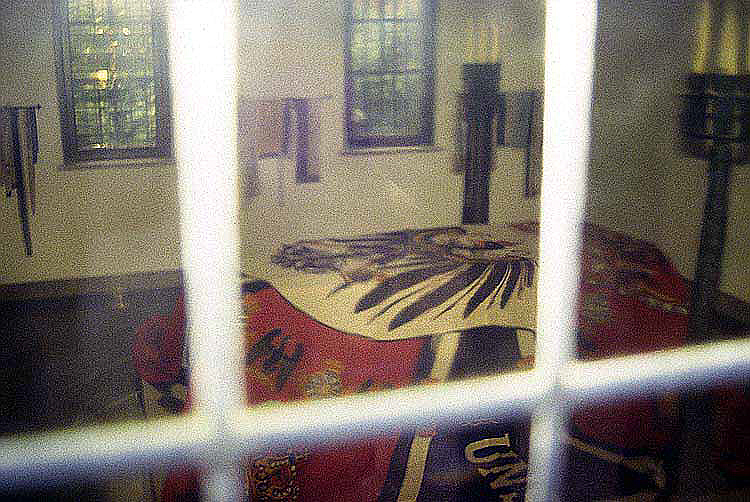Contributed by Steve Miller
On 10 November 1918 the last German emperor and his military entourage caught a train from the Belgian town of Spa to Liège. They then transferred to a convoy of cars and arrived at six that evening at the Dutch border town of Eijsden, just south of Maastricht.
The request for asylum was formerly delivered, and the Dutch government agreed. Their queen, Wilhelmina (1880–1962), was a blood relative of Kaiser Wilhelm and was duty bound to offer him asylum. Wilhelm was considered to be a Prince of Orange because of the many intermarriages between the Dutch House of Orange and the German House of Hohenzollern. Wilhelm’s mother, Victoria (1840–1901) was also Queen Victoria’s eldest daughter, making him a direct relative of the British monarchy.
Click on Image to Expand
 |
Kaiser Wilhelm II and Empress Auguste |
As an interim measure, the Dutch government approached the owners of Kasteel Amerongen in the province of Utrecht. Here, it was agreed the exiled Kaiser would be put up for an initial three days until something suitable was found. His first request to his host was for a cup of English tea. The three days at Amerongen turned into 18 months. The Kasteel’s owner, Godard Graaf van Aldenburg Bentinck (1857–1940), belonged to the Order of Saint John, and he too was obliged to help “a brother” in need. On 28 November, Wilhelm’s first wife, Empress Auguste Viktoria (1858–1921), came to join him from Germany. As a condition of his stay in the Netherlands, the Dutch government demanded that Wilhelm live as a private person and not offer any political views. He also had to consent to being censored.
Click on Image to Expand
 |
Three Views of Huis Doorn; Main Residence and Gatehouse |
Eventually the 24-room manor house at Doorn near Utrecht shown here (known as Huis Doorn) became the last Kaiser's home until his death in 1941. It is a national monument and is the site of the Kaiser's remains. A small mausoleum on the grounds contains his remains.
Click on Image to Expand
 |
Wilhelm's Personal Memorabilia and Desk |
The trustees of the manor house in Doorn have deliberately kept it as a "living museum" to the former Kaiser. Its rooms are packed with memorabilia, including uniforms, portraits of the Kaiser and his wife Empress Auguste-Viktoria, and even a kilt given to the him by Queen Victoria when he was a child. A small mausoleum on the grounds contains his remains. The coffin is covered with an Imperial German flag.
Click on Image to Expand


I visited Huis Doorn several years ago. I would recommend that anyone who finds him/her self in the Netherlands or Belgium make a trip. The museum workers are very nice and full of information. The main house is chock full of things - when I was there one could see the room where the Empress died (one gets a sense of the very Victorian way that death was handled). Wilhelm's second wife was not happy that his first wife's room was not given to her to use but instead kept as a memorial to her much the way that Victoria kept Albert's room following his death. The chapel that serves also as a mausoleum is not open to the public and it was very difficult for one to see in through the dirty windows that are also overgrown with greenery. When I was there the casket was not covered with the imperial flag but was tilted in the narrow and only slightly raised steps. The hope was that he would be interred at Sans Souci (where his first wife is buried) but this was not permitted. For all Wilhelm's faults, he had no truck with the Nazis (though his second wife did). She would move back to Germany after his death and wound up in an allied prisoner of war camp (where I believe she died) after the war's conclusion.
ReplyDeleteI would definitely be interested in visiting this. On a related note, in my view still an excellent series after all these years and worth rewatching in the lead up to the centenntial is Fall of Eagles from the BBC (1974). Who can forget Barry Foster as chewing the scenery as Kaiser Wilhelm, or Curt Jurgens as Bismarck, or Patrick Stewart as Lenin?? And many more.
ReplyDeleteRoyal families tend to keep it in the family. It is quite interesting to see that Kaiser Wilhelm was Queen Victoria's grandson, linking him to the British monarchy as well.Royalty is always praised no matter their actually significance or effect. Even though the Kaiser lived in this vicinity for but a short while, it is still used a museum honoring him. And i have to say i do like that his first order was a cup of English tea!
ReplyDeleteI never knew that Germany and the Netherlands had such close ties. The same could be true for the rest of Europe, I suppose, but I still have to wonder ex-Kaiser Wilhelm would have thought about his old country invading his place of asylum.Especially considering that its new leader had ascended to the same post as Bismarck, who he had fired himself.
ReplyDelete